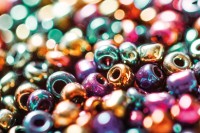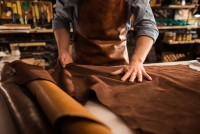

- Chemicals
- Advice
- Back
-

-

-

-
 Main Reaction - The TFL Blog Stories, incidents, tips and facts around the topics leather, chemistry, fashion, sustainability and ecology. Our editorial staff consisting of experienced tanners, scientists, market experts, fashion and communication specialists has sharped their pencils and will supply you with fresh and inspiring content on a regular basis.
Main Reaction - The TFL Blog Stories, incidents, tips and facts around the topics leather, chemistry, fashion, sustainability and ecology. Our editorial staff consisting of experienced tanners, scientists, market experts, fashion and communication specialists has sharped their pencils and will supply you with fresh and inspiring content on a regular basis.
- Technologies
- Back
-

-

-

-
 LEVOTAN® / LUBRITAN™ - Looking for higher performance? Tanners around the world are facing increasing challenges from their customers, for example, demands for higher performance such as fastness to light and heat resistance, but also lighter weight leather and more recently odour / emissions avoidance.
LEVOTAN® / LUBRITAN™ - Looking for higher performance? Tanners around the world are facing increasing challenges from their customers, for example, demands for higher performance such as fastness to light and heat resistance, but also lighter weight leather and more recently odour / emissions avoidance.
- Feel the difference, love the coolness The first technology offered tothe leather industry, which is able to restrict the rise of temperature on the leather surface when coloured leather is exposed to sun radiation.
- Prevention of odour in car interior Smell is our most intimate, individualistic sense and in the changing field of automotive interiors, the odour of leather may be the key to achieving acompetitive advantage.
- Car leather – significant potential for emissions Emissions of volatile organic compounds from vehicle trim components such as leather can affect the interior air quality and therefore the comfort and health of drivers and passengers.
- Quality & Safety
- Quality & Safety Overview When it comes to health, safety, quality & environment TFL shows the highest awareness with internal process standards, certifications and memberships in groups and organisations.
- Certifications ISO International Standards ensure that TFL products and services are safe, reliable and of good quality.
- About TFL
- History TFL was founded in 1996 when Ciba-Geigy’s leather business unit merged with the leather departments of Röhm and Stockhausen – both member companies of the Degussa-Hüls Group.
- Management The four members of the TFL Executive Board bring together their extensive experiences and high expertise in chemistry, engineering, finance as well as in sales and marketing.
- Contact










